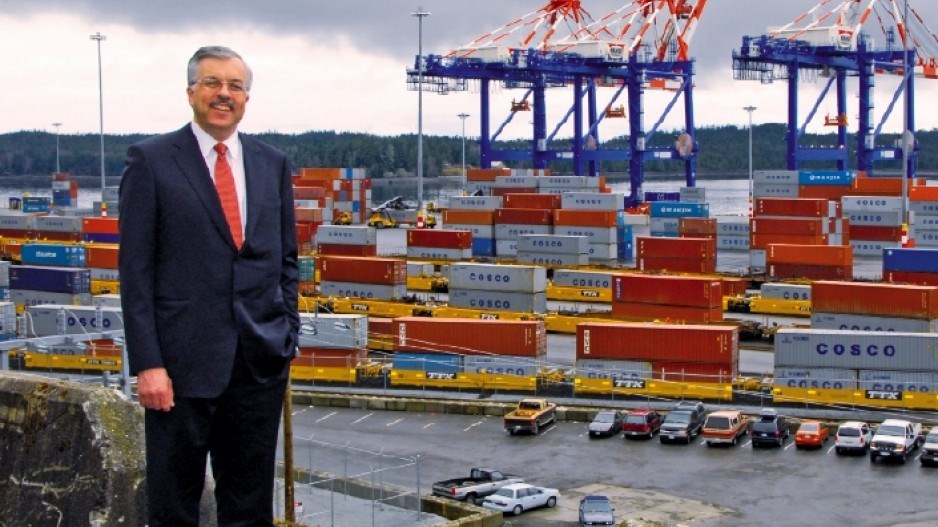What a difference a decade makes.
The decline of the resource sector in northern B.C. during the late 1990s prompted an exodus from the region as layoffs and closures hit the salmon industry, pulp mills and mines. The closure of Skeena Cellulose Inc.’s pulp mill at Prince Rupert in 2001 and shuttering of the Quintette and Bullmoose coal mines at Tumbler Ridge in 2000 and 2003, respectively, became icons of the region’s malaise.
The population of northern B.C. – the North Coast, Nechako and Northeast development regions – fell from 180,569 in 1997 to 164,045 a decade later. Prince Rupert, which had 18,000 residents at its height, was hit particularly hard; its population sank to approximately 12,800 in the 2006 census. While the region’s population is set to reach 171,370 this year, it’s largely due to the vibrant Northeast sector. Prince Rupert, by contrast, lost an additional 300 souls in the 2011 census.
The future doesn’t promise a respite: Andrew Ramlo of the Urban Futures Institute in Vancouver notes that the region will see 24,625 retirements over the next eight years, potentially reducing the population and available workforce even further.
The drop in population undercuts hopes pinned on an expansion of Prince Rupert’s port, where a brand new container facility has been heralded as the first step in an economic resurgence.
A similar challenge faces Kitimat, where upgrades to Rio Tinto Alcan’s smelter facilities – the largest private investment in the province’s history – and plans for a liquefied natural gas terminal are fuelling local hopes.
All told, the province expects more than 37,000 workers to be needed in northern B.C. by 2020.
Unfortunately, the number of employment-aged residents in the region is projected to increase by a mere 3,473 by 2020 – less than a tenth of what’s required. And even when the approximately 6,000 unemployed residents of the region are factored in, the shortfall remains far from what the jobs outlook requires.
“Growth in the labour force–aged population – assuming 100% participation – and eliminating unemployment in the north would mean that the potential of future workers would only be one-quarter of the ministry’s projected demand,” Ramlo said, bluntly.
The issue is the elephant in the room for northern employers, who will face greater recruitment costs as the local population continues to age and dwindle.
Prince Rupert Port Authority president and CEO Don Krusel was unavailable to discuss steps the port is taking to meet its employment needs. Instead, port spokesperson Michael Gurney responded via email: “From the port authority’s perspective, we anticipate significant increases in employment opportunities within the next few years as new terminal developments begin construction and operation.”
Gurney did not elaborate on how those opportunities would be filled.
Sue Kenny, general manager of Community Futures of Peace Liard, also focuses attention on the region’s growing job opportunities, which she says are exacerbating an employment picture that’s never been easy for northern communities to address.
“There’s such a skilled labour shortage across the province that if you have any kind of increase in your economy, then you’re caught,” she said. “We’ve had new development, and the population just has not been able to keep up with it.”
But she acknowledges that increasing retirements will hit northern B.C. hard – particularly outlying communities such as Fort Nelson and those further north. While the exploration sector relies on transient workers, it’s the full-time staff required for long-term extraction and processing activities at mines and well sites that are the most difficult to attract. The men might be fine with a remote location, but their families need more.
“They want to be at the centres where there’s more educational institutions, more opportunity,” said Kenny, who originally came to northern B.C. 24 years ago when her husband landed a job in Tumbler Ridge.
Wives in Tumbler Ridge typically had few job prospects outside the home, contributing to a higher incidence of depression and other social issues.
“It was a huge issue,” Kenny said. “In isolated regions, it can be a problem.”
The good news, however, is that times have changed. A shortage of skilled workers means that men and women have opportunities, and the slower pace of life and outdoor recreational opportunities small towns offer are seen as perks rather than detractions for many couples.
“It’s not like it was then,” Kenny said. “If you’re not working right now it’s because you don’t want to work.” •




